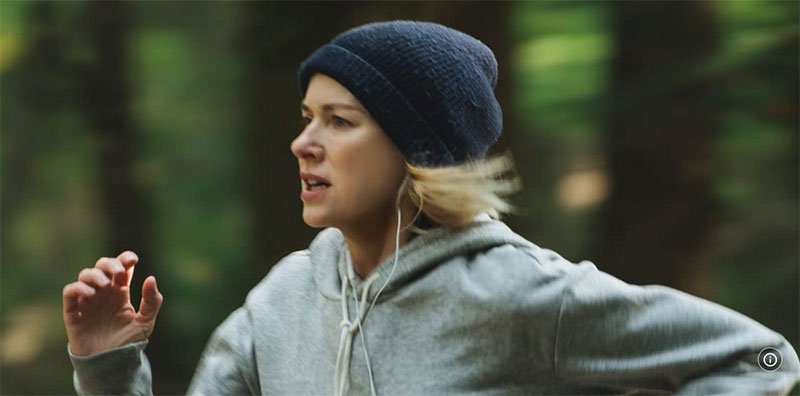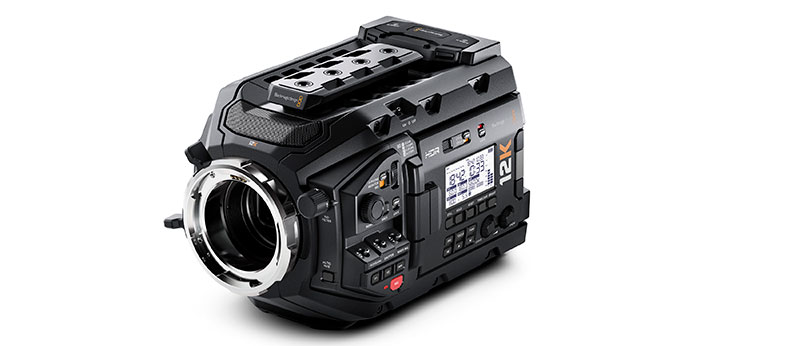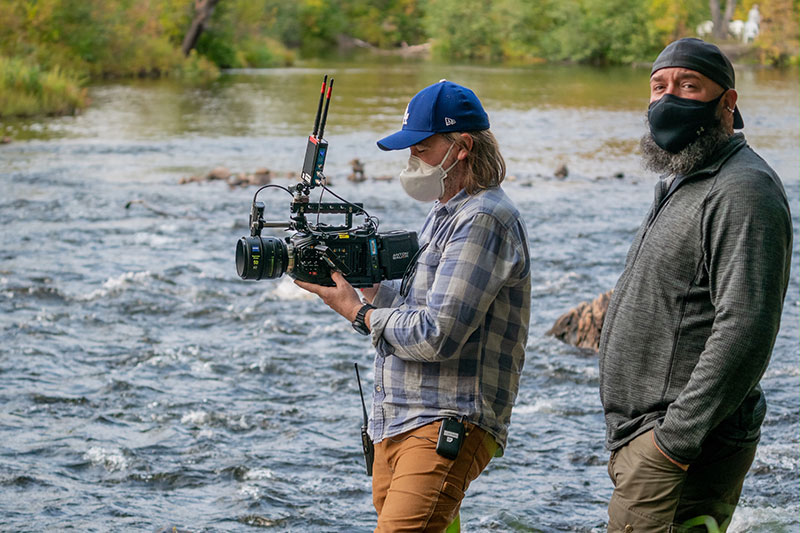Cinematographer John Brawley ACS shot he new thriller ‘The Desperate Hour’ to unfold in real time, using the URSA Mini Pro 12K handheld or with a remote head on the back of an ebike.

Feature film ‘The Desperate Hour’, a thriller directed by Phillip Noyce, was shot by Cinematographer John Brawley ACS to unfold in real time. The story follows a recently widowed mother, out for a jog in the woods, who discovers that a shooting has occurred at her son's school. She is running, miles away on foot in the dense forest, and must race against time to save her son.
Production took place in July 2020, in the midst of the first COVID outbreak in a remote area of Northern Ontario. Beyond the challenges of shooting during the pandemic, the story itself presented challenges for the camera work. Though the majority of the story’s involves only one actor, her character runs constantly through rugged terrain, which made the approach to cinematography critical to the film’s success.
Four Camera Bodies
John Brawley chose to shoot with the Blackmagic Design URSA Mini Pro 12K digital film camera, both for the small form factor and the high resolution. “Our character is jogging, running or walking fast for most of the film,” he said. “She starts off on a road and then she's on a dirt road, then on two tracks and then she's on some little goat trails in the woods and, finally, she's literally in the middle of the forest with no tracks.”
Essential to the production for John was working with a small cinema camera that could be rigged in multiple ways to make sure they could achieve a wide range of coverage styles despite those practical challenges. “The film plays more or less as real time, so when you start thinking about how to shoot that, it gets challenging,” he said. “We had to think, what can we use to keep up with the actor when some of the takes are 15 minutes long and she's going to run a few miles? What will we use that can keep up, but won’t make a sound? It was deceptively complicated and also ambitious.”

John brought four URSA Mini Pro 12K camera bodies on board, rigging one on the back of an electric motorcycle using the ARRI Stabilized Remote Head SRH-3. “The great thing about the SRH-3 is that it made a very small, lightweight package on the motorcycle,” he said. “When you're trying to literally weave in and out of trees and so on, you want a small head and a light camera package.”
A second camera body was rigged in studio mode, with a splinter crew using a third to shoot B roll or work with the actor’s doubles. The fourth body was saved for a backup. John also had a Blackmagic Pocket Cinema Camera 6K Pro to capture various inserts.
Stability and Rolling Shutter
For him and his director Phillip Noyce, the extra resolution of 12K was part of the plan early on. “The 12K resolution was a plus because we knew that at certain times, we would probably have to stabilize a shot, even with a stabilized head,” he said. “The other cool thing is that the URSA Mini Pro 12K can work in 8K mode without losing any field of view. An advantage there is that the rolling shutter readout time is halved.”
A camera with rolling shutter doesn’t capture each frame by taking a snapshot of the entire view at once, but instead rapidly scans across it. That is, not all parts of the image of the scene are recorded at one moment, although during playback, the entire frame is displayed at once, as if it represents a single instant in time. Through this method, the image sensor can continue to gather photons during shooting and increase sensitivity but, not surprisingly, it tends to distort fast-moving objects or quick flashes.

John said, “Roughly, the URSA Mini Pro 12K has a readout of about 15 milliseconds, but in 8K it's half that, about 7 to 8 milliseconds. For intense action scenes, especially if we're in profile or panning through trees, the rolling shutter in 8K mode helped to eliminate skewing of the verticals. If we were leading ahead of Naomi from the back of the ebike, we'd leave it on 12K, but if it was profile, panning, we'd go to 8K.”
Blind Test
Phillip and John had worked with Blackmagic Design cameras in the past, most recently shooting a pilot using the URSA Mini Pro 4.6K G2 as their A camera, but John still shot a test for the new movie. “I shot some stuff with the URSA Mini Pro 12K and with another cinema camera. We made a DCP and screened it in the local cinema in North Bay, the little village where we worked. I love doing these as blind tests. We had the shots up on the big screen with the producers and the director. Everyone actually liked how the URSA Mini Pro 12K looked – it was what people responded to the most.”
John had anticipated that various departments would express concern that the higher 12K resolution of the camera (12,288 x 6,480 pixels) would cause unforeseen problems. “I had a conversation with Naomi's hair and makeup artists, for example. When they heard the 12K number they were saying, ‘Wait, you're gonna put this camera one foot from her face?!’ However, when you actually have that kind of resolution in front of you, the opposite happens. It's almost as if the pixel structure disappears and it becomes in a way more flattering.”

Building the Image
He chose Zeiss Supreme lenses to match with the 12K resolution and discovered some pleasing results. “When I was first shooting with the URSA Mini Pro 12K cameras and the Supremes, it had an almost large format look, which is how I would describe it, even though it’s a Super 35mm sensor. The frames are beautiful where they fall off. I feel like that lens has a bit of a large format look, so I feel like the Supremes are a very good match for the URSA Mini Pro 12K.”
Beyond the technical aspects, John knew that the URSA Mini Pro 12K combined with Blackmagic RAW would give him the image he needed for the film. “The sensor works in a unique way. We were shooting in autumn and knew the colours in the forest would be a big part of the look,” he said.
“Production design had chosen the locations for the look, of course, but the location became a character as well. With the URSA Mini Pro 12K we had a camera that could do justice to that vibrancy, nuance and subtlety in the autumnal colours in that forest. Especially when you're grading, it feels like you see a lot more subtlety. When you're looking at the actor’s face, you can see the sky colour reflected on her forehead.”
Compression Setting
Choosing a compression setting for the shoot was also critical for data management and highlighted some of the differences between Blackmagic RAW and other codecs. “I used the Blackmagic RAW Constant Quality ‘Q’ settings, recording most of the film at Q3. At 12K, Q3 records about one terabyte an hour and had the look he wanted for the project.

“The Constant Quality settings are interesting because the bitrate floats, with a bracket between low and high, and it isn’t based on motion – it's based on focus. So, if something is out of focus, it uses less data, and if it's in focus, it uses more. It was interesting to realise and work that out. However, I never really felt like I ran into the wall of the compression itself.”
The URSA Mini Pro 12K’s compactness, economics and resolution, and its ease-of-use when shooting handheld or on the ARRI head, had attracted John and Phillip, but the results achieved from the RAW workflow were in fact the best reason to use the camera. Phillip attended the premiere at the Toronto International Film Festival, and said the film looked amazing on the big screen.
The film premieres in theatres and on demand on 25 February 2022. www.blackmagicdesign.com




